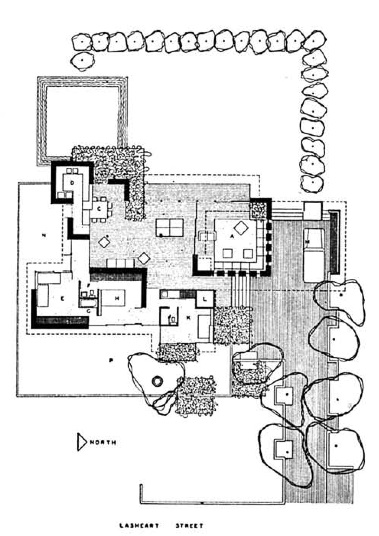
While many mid-century modern architects could do little more than design a floor and a ceiling and four walls of glass – unleashing one glass box after another on the world – architects like Whitney R. Smith was doing something different.
While they may have looked superficially similar Smith was designing layered spaces that nested and interlocked, in houses with broad roofs which provided a "sense of shelter," with the fire "burning deep in the solid masonry" of the house – deceptively simple houses giving both prospect and refuge, that brought in and opened up to nature.
"Basically the fundamental innovations of those designs had to do with a radical integration of indoors and outdoors within the houses' plans," said Elizabeth A.T. Smith [no relation], chief curator at the Museum of Contemporary Art in Chicago. "They were very much opened up to nature and were oriented around gardens and natural plantings.

"I think that one of the primary characteristics of Smith's designs not only in these but throughout his career was his synthesis of experimental materials and structures with a real sense of appreciation for nature, the climate in Southern California and the landscape. And he was able to fuse these concerns to create very sensitively designed works of architecture."

My favourite is his 3-bedroom Case Study House, sadly never built. But what a floor plan!
And with its small scale and ingenious use of privacy screening, a very model of metropolitan living in a benevolent climate like ours.

[Pics by Space 72, Save Wright, Esther McCoy's Case Study Houses 1945-1962]




1 comment:
Certainly very different design to the homes which the NZ State built after the war. Thousands of them, and they were all the same . We lived in one of the double units they built, the next attached home being a mirror image of the first.
Post a Comment